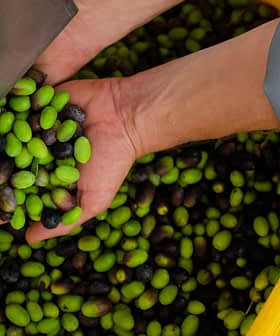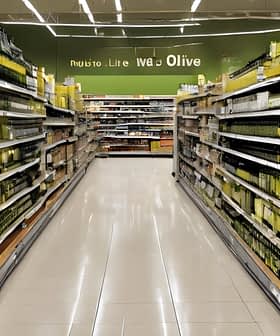U.S. and E.U. Olive Oil Sectors Anxiously Await Trade Ruling
The imposition of tariffs on European Union olive oil exports to the United States would hurt farmers, raise prices in America and be difficult to undo.
The World Trade Organization (WTO) is set to hand down a ruling by the end of next month, which will determine whether the United States can impose a 100 percent tariff on up to $15 billion of goods imported from the European Union.
Olive oil in all of its fractions as well as four different types of green table olives are included on the list, which is composed of about 400 different goods, ranging from paint brushes to swordfish. Once the WTO has made its ruling, the decision will be final and cannot be appealed.
The WTO previously ruled that the E.U. had unfairly subsidized Airbus, which hurt Boeing, an American company. The United States Trade Representative (USTR), which was in charge of drafting the list, originally estimated that the European subsidies were worth $11 billion. This was later revised up to $15 billion.
American producers would be expected to raise their prices as would suppliers from other non‑E.U. countries because they can and because demand will far exceed supply.
The E.U. has called this estimate “greatly exaggerated” and expects the WTO to allow retaliatory tariffs on a far smaller amount of goods.
“Eleven billion dollars is too high,” Steve Charnovitz, a trade law professor at George Washington University, told Olive Oil Times. He also said that the USTR generally asks for more tariffs than it is going to get approved.
Charnovitz added that he did not know whether olive oil and table olives would be included on a final list of tariffs, if the full amount is not approved.
See Also:Olive Oil Trade NewsDouglas Irwin, who studies U.S. trade policy and teaches at the economics department of Dartmouth College, also said that it is very uncertain which goods would be removed from the list if the WTO approved a lower amount of retaliatory tariffs.
“If the U.S. goes for a lower number, either because the WTO suggests it or the administration wants to, it is very uncertain which goods will make the cut or not,” he told Olive Oil Times. “[Olive oil] may stay on for strategic reasons, [for example] to hit Spain or Greece particularly hard to get leverage to change the Airbus subsidies.”
The U.S. currently imports about 95 percent of the olive oil that is consumed domestically. Of that, 65 percent comes from E.U. countries, which include Croatia, France, Greece, Italy, Slovenia and Spain.
In the 2017/18 harvest season, E.U. countries exported 194,570 tons of olive oil to the U.S., with an estimated value of roughly $1 billion.
The uncertainty has many European producers worried. Exports to the U.S. made up 35 percent of European olive oil exports in 2017/18. It is unclear to many where the olive oil that will not end up in the U.S. can be sold instead.
Assitol, the Italian Association of the Olive Oil Industry, has warned that producers could lose $200 million per annum if the tariffs are approved. The U.S. is one of Italy’s largest export markets for olive oil.
Producers in Spain, which has already been in a trade spat with the U.S. over table olive exports, are concerned too. The U.S. is also one of its largest markets and, with historically low prices already plaguing the country, officials fear any more lost revenue could further damage producers’ bottom lines.
“It is a Sword of Damocles” – referring to an Ancient Greek anecdote, which epitomizes the ever-present danger faced by those in a position of leadership – “that hangs over the entire sector,” Mariano Íñigo, an economist at the EAE Business School in Madrid, told El Mundo.
“Exports would be reduced by 25 percent and there would be overproduction in Spain,” he added. “It is a sector with a narrow margin, which would be the end of many farms that would stop producing because they were not profitable. It would be a catastrophe.”
The picture does not look very rosy on this side of the Atlantic either. Tariffs often serve as a regressive tax on consumers, meaning any price increases to European olive oil would likely be paid by Americans.
The North American Olive Oil Association (NAOOA), a trade group that strongly opposes the tariffs, claims that the tariffs would increase the price of a $15 bottle of extra virgin olive oil up to $40. It is still unclear exactly how much prices would increase, but is inevitable that they would do so.
“We’re looking at a dire shortage of olive oil,” Joseph R. Profaci, the executive director of NAOOA, said. “Prices will go up astronomically.”
The NAOOA estimates that imports from other non-European sources would not be able to fill the gap left by European producers.
“By our calculations based on International Olive Council production and consumption data for 2018/19, even if all the non‑E.U. countries were to flick a switch and send all net surplus to the U.S., there would be a shortfall of about 30 percent vis-à-vis normal U.S. demand,” Profaci told Olive Oil Times.
There is also speculation that American olive oil producers may raise their prices if the tariffs are imposed. While there is no evidence that this will happen, once a domestic industry is protected from foreign competition, there is no incentive to keep prices low.
“American producers would be expected to raise their prices as would suppliers from other non‑E.U. countries because they can and because demand will far exceed supply,” Profaci said.
The predicted rise in prices is also estimated to have a large impact on Americans’ consumption of olive oil, which has more than doubled in the past two decades.
According to a joint study conducted by the NAOOA and American Olive Oil Producers Association last year, 36 percent of the 2,000 consumers interviewed already said that olive oil prices were too high and that price was something that prevented them from buying olive oil.
“An increase of $10 to $20 per bottle will certainly result in lower consumption, reversing all the efforts we have made over the past years to grow consumption,” Profaci said.
Perhaps most worrying for members of both the U.S. and European olive oil sectors is how difficult any tariff impositions would be to reverse.
“The tariffs would go into effect by executive order and cannot be overturned by Congress, or at least it would be very difficult to do so and unlikely that they would do so,” Irwin, the professor of economics at Dartmouth College, said.
“The next administration would have the option of reversing the decision, but that might be unlikely,” he added. “The most plausible outcome would be some U.S.-E.U. agreement on subsidies that would allow the tariffs to be removed.”
The WTO is expected to make its decision by the end of August. Until then, European olive oil producers and exporters as well as American importers and consumers will have to wait and see what happens.








